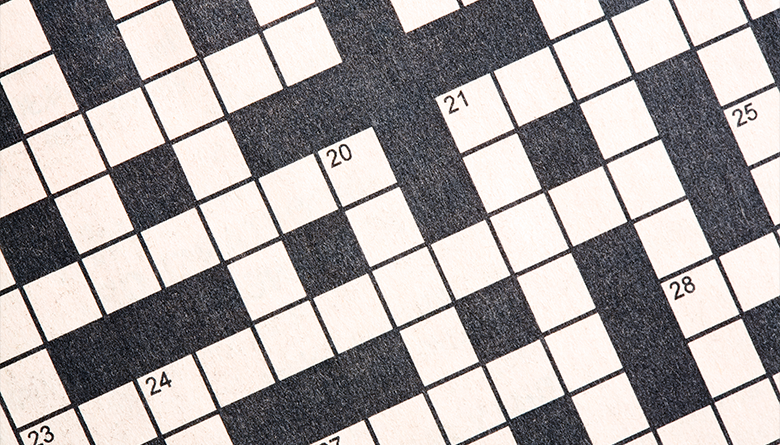
“AI cannot surpass human intelligence when it comes to crossword puzzles.”
—Selmer Bringsjord, Professor of Cognitive Science
Artificial intelligence is a hot topic of discussion in today’s world. From the Google Home and Amazon Alexa to facial recognition on Facebook, artificial intelligence, also known as AI, continues to impact everyday life more and more with each passing year. The presence of AI in society has raised a debate as to whether or not machines will one day outsmart and outperform the human race.
When it comes to the game industry, this argument is more relevant than ever before. There is a long history of using AI to beat humans at games. In 1994, computer program Chinook beat Marion Tinsley, the world’s best checkers player. Similarly in 1997, Deep Blue, an IBM supercomputer, won a chess match against former world champion Garry Kasparov. Fast-forward to 2011 when IBM’s Watson defeated Ken Jennings at Jeopardy! Likewise, in 2016, Google’s AlphaGo beat master Go player Lee Sedol.
Despite the evolution of AI and the continued victories from computers in the world of gaming, Selmer Bringsjord, professor in the School of Humanities, Arts, and Social Sciences (HASS) at Rensselaer, believes human intelligence will forever remain superior to machine intelligence. Most recently, Bringsjord is examining crossword puzzles to support that belief.
When estimating the difficulty of modern crossword puzzles, Bringsjord places them in the same category as Jeopardy! because an intelligent machine could quickly confirm the answers are correct if given the answers, questions, and reference material. Therefore, an intelligent machine could easily defeat humans at crossword puzzles as they exist today. However, Bringsjord argues that AI cannot surpass human intelligence when it comes to crossword puzzles because of what such puzzles have the potential to be.
“We need to create a harder space of puzzles that are reminiscent of crossword puzzles but that allow us to have arbitrarily long clues and answers beyond what is directly findable in reference works like dictionaries or Wikipedia,” said Bringsjord. In a keynote at this year’s Times Union Upstate Crossword Championship, he used the following clue to illustrate what would be unsolvable for an intelligent machine when completing a crossword puzzle.
Q: What is three times the major difference separating Ursus Au from the greatest game of all’s member of Panthera tigris?
To arrive at the answer of 12, Bringsjord explained the following:
- Ursus = Bear
- Au = Gold
- “Golden Bear” = nickname for Jack Nicklaus
- Pathera tigris = Tiger (Tiger Woods)
- Jack Nicklaus won 18 majors and Tiger Woods won 14 majors. Therefore, there is a difference of 4 majors.
- 4 x 3 = 12
While this question would not be allowed as a clue in modern-day crossword puzzles, it is an example of a class of problems that a computer will never be able to solve on its own. This clue goes beyond frozen data, a crucial factor when it comes to producing a machine that can beat a human at a game. In order to correctly solve the above clue, a machine would not only need to translate “Ursus Au” into “Bear Gold,” but also think critically to connect that phrase to the nickname of a famous golfer. Additionally, Jack Nicklaus wrote a book called The Greatest Game of All, a fact that helps a human solve the clue but is relatively useless for an intelligent machine.
Games like crossword puzzles illustrate the limitations that still exist when it comes to AI and the unique abilities of human intelligence that cannot be replicated by machines. While there is no doubt that AI will continue to transform the world, it is clear that human intelligence will prevail.
By Regina Stracqualursi
—
In the dramatic finish of the 2009 American Crossword Puzzle Tournament, Tyler Hinman ’06 defeated competitors for his fifth consecutive win. The tournament is the nation’s oldest and largest crossword competition. It was founded in 1978 and is directed by New York Times crossword editor Will Shortz. Hinman, an information technology major, started solving crossword puzzles in ninth grade. He was the youngest person ever to publish a puzzle in The New York Times, at age 15.




